-

Erin Donahue -

Christina Barkanic -

Brittany Trott -

Emily Wiley -

Jessica Reilley -

Chris Raines -

Will Nichols -

Emily Reddy -

Michele Marchetti -

Michele Frank -

James Gherardi -

Kit Henshaw -

Christina and Erin -

Kim Tait -

Erin McKinney -

Steve Spanelli -

Sam Komlenic -

Katherine Taylor Grofic -

James Eisenstein -

Jamie Oberdick -

Anna Lombardo -

LacCreta Holland -

Tony Ricci -

Local Food Journey -

Laura Young -

Kristin Camplese -

Harrison's Fresh + Local -

Danielle Matalonis -

Kristine A. -

Linda Weaver -

Naomi Elle Schwartz -

Dana Stuchul -

Cara McShane -

Brittany Smith -

Jessica Illuzzi - Frosty
-

Jessica Paholsky -

James Sechrengost -

Brad Yeckley -

Maya Althouse -

Jordan Reabold -

Kim Chase -

Maria Bryant - Alexandrea Scott
Fall at the Farm
Posted by James Eisenstein on 11/02, 2017 at 06:59 AM
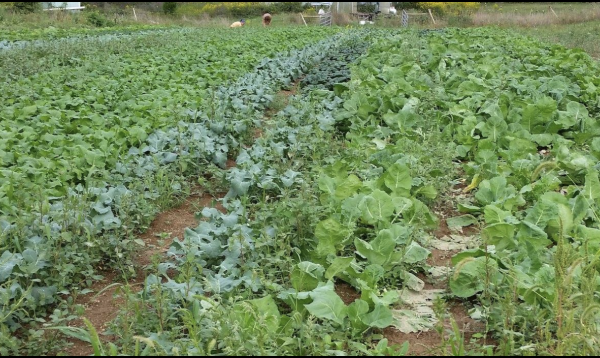
Fall crops at Jade Family Farm
Ever wonder what goes on at a produce farm in October? You might assume that the crops are in and it’s time to lean back and sip some hard cider. For farms growing grain and soybeans, this might be true. For organic produce (and fruit) farms like Jade Family Farm, this is one of the busiest times of the year.
Our regular harvest share season ended Oct. 24, so we no longer have to harvest and pack some 90 orders per week. But we still offer customers an opportunity to order “a la carte.” The North Atherton Farmers market won’t close until Thanksgiving and the Boalsburg market will be indoors starting Nov. 7 all winter and spring. So we will still be harvesting, going to market, and selling wholesale to several outlets.
Our lettuce won’t be around long in the field, but we have some of it in our high tunnel to harvest in November.
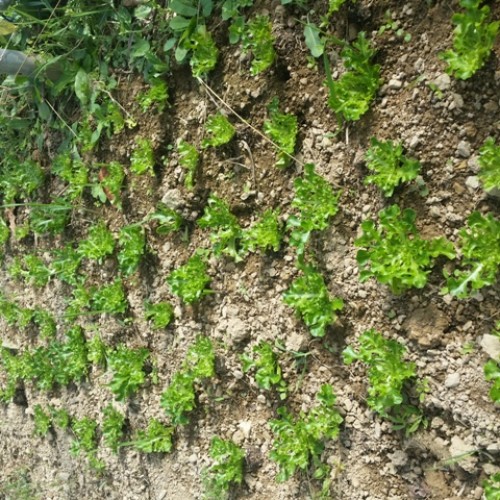
Hi Tunnel Lettuce
We will be harvesting hardier greens until we have a hard freeze below 23 degrees. They include escarole, kohlrabi, Napa cabbage, broccoli, spinach, bok choi, semposai (a cabbage/collard cross) and the gorgeous Tat Soi.
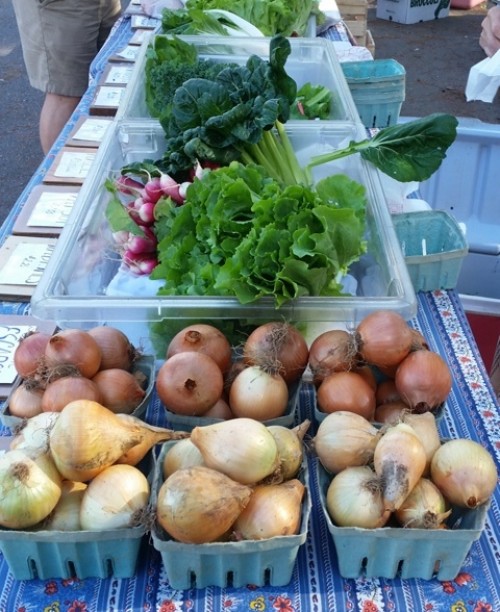
Indoor market produce from Jade Family Farm
Next come the root vegetables. We have already harvested potatoes, a huge crop of three varieties of sweet potatoes, and onions. We will need to harvest Belgian Endive roots, turnips, kohlrabi, beets, salad turnips, black, watermelon and daikon radishes, carrots, and parsnips, starting with those most vulnerable to frosts. Carrots and especially parsnips can wait, but not all the others. The size of the turnip field is typical. It will take a lot of time to harvest almost all of these crops, then clean and pack them for proper storage.

Lots of turnips to harvest
Another major essential fall task is sowing cover crops. These crops cut down on erosion, enrich the soil, suppress weeds, reduce carbon emissions, and sequester carbon. So after harvesting onions, potatoes, sweet potatoes, peppers, tomatoes, and eggplant (among other things), we had to find time to prepare these fields and sow the cover crop. We have some well established cover crops, pictured below, and have just seeded recently cleared fields where summer crops like tomatoes grew.
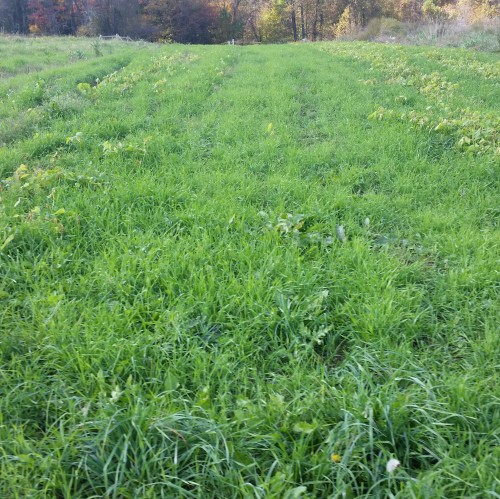
Rye vetch cover crop
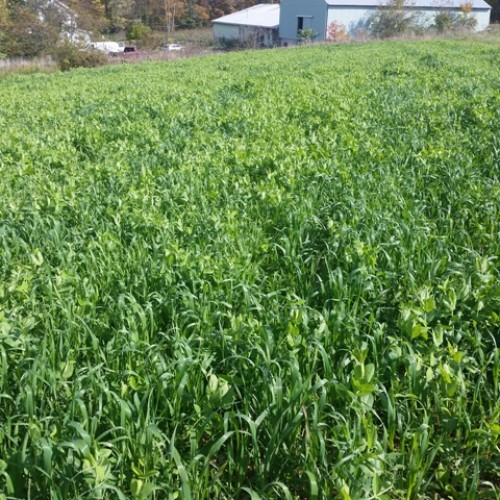
Rye and field pea cover crop
Our orchard also requires attention. I spent about six hours applying an organic holistic spray to remaining leaves and bark, and to encourage fungal growth in the soil. We will also need to mow to reduce diseases next year.
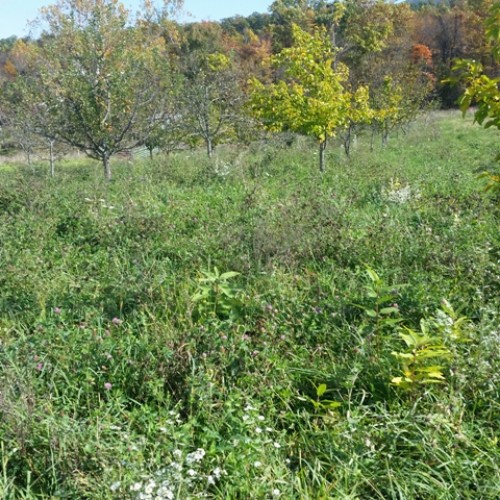
The orchard needs to be mowed.
Oh, and mustn’t forget that we need to weed and mulch the hardy kiwi, clean up the fields of row cover, tomato stakes, and other detritus, and begin work on our endless winter to-do list. Come the middle of December, when we’re not packing for and selling at market, we’ll have a little time to sip the cider before beginning to force our Belgian endive roots, ordering seeds, and starting on the to-do list.
![]() Author: James Eisenstein
Author: James Eisenstein
Bio: Unpaid Field Hand at Jade Family Farm | Former Penn State Professor
- Our Local Food Journey comes to an end
- Winter isn’t a quiet time at the farm
- Get the taste of garden season right now by growing herbs indoors
- All you need to know about PASA’s Farming for the Future conference









NO COMMENTS